Welcome to the world of Sweet Success: Mango Farming in Kenya! In this comprehensive guide, we’ll explore the key factors for achieving fruitful results in mango cultivation. Get ready to discover essential insights and practical tips to ensure a thriving mango farm. Kenya’s tropical climate and fertile soils are ideal for these delicious fruits. With over 20 varieties of mangoes being cultivated, we’ll delve into the top-performing ones. We’ve covered you, from planting techniques to proper irrigation and pest control.
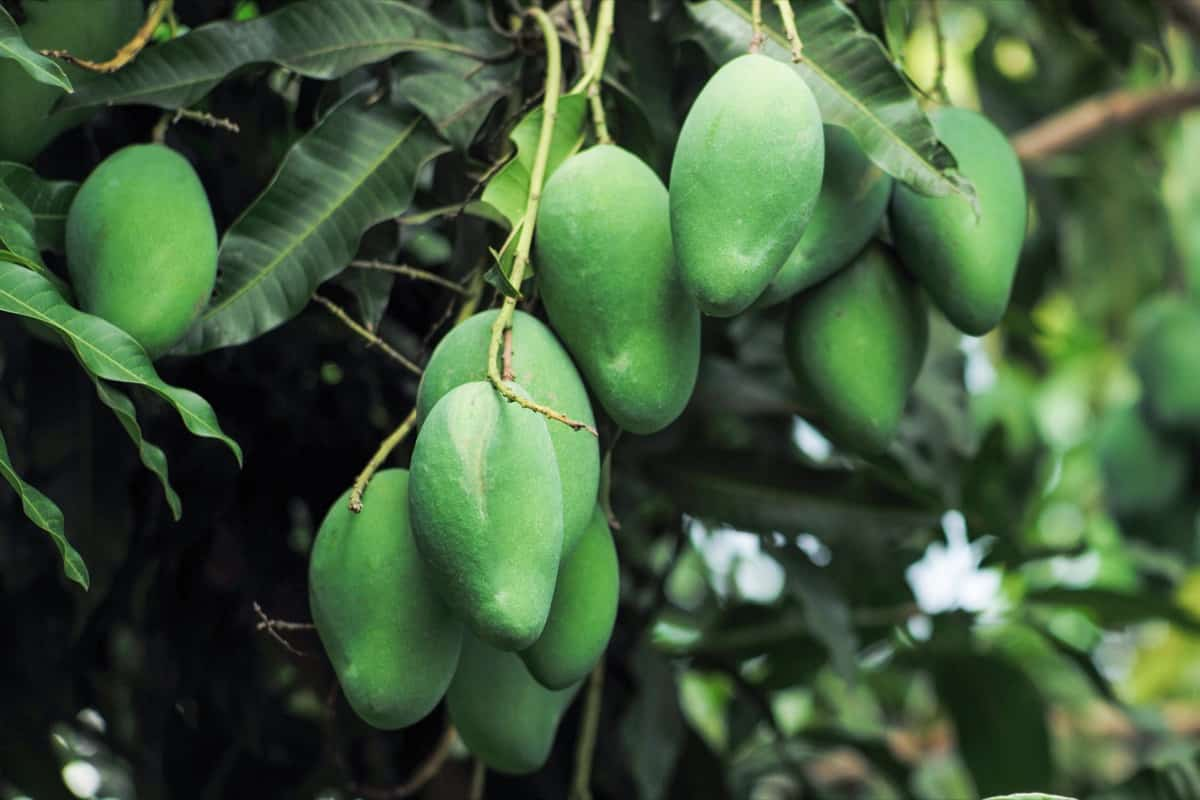
Mango Farming in Kenya
Mangoes are grown in eastern and coastal Kenyan regions, including Makueni, Machakos, Kitui, Taita Taveta, Embu, Kajiado, Mwea, Baringo, Thika, and Murang’a. Farmers cultivate local and exotic mango varieties, including Tommy, Kent, Dodo, Bobio, Batawi, and Ngowe. Specific ecological conditions are necessary to ensure successful cultivation, including annual rainfall between 850-1000 mm, a temperature range of 15°C-30°C, and deep, well-drained soil with a pH range of 5.5 to 7.5.
Land preparation and planting are essential, with a recommended planting space of 5m by 5m. Indigenous varieties are propagated using seeds, while exotic varieties are grafted onto local rootstocks. Mango trees typically yield 200-500 fruits per season after four years. Regular pruning is crucial for optimal growth. Mangoes, including thrips, mango seed weevil, red spider mites, mealybugs, and mango fruit flies, are susceptible to pests and diseases. Insecticides and pesticides like emerald, loyalty, Lexus, and alonze can effectively control these pests.
Common diseases like powdery mildew, anthracnose, and dieback can be managed using sprays like Trinity Gold, ransom, and green cop. Kenya’s strong domestic market for mangoes is high due to its popularity among consumers. Mangoes are sold in open-air markets, groceries, supermarkets, and food stores, with prices varying based on size. In addition to the local market, opportunities for exporting fresh mangoes exist, particularly to European and Middle Eastern markets.
Mango Farming Techniques in Kenya
- Varieties: Cultivate local and exotic mango varieties like Apple, Tommy, Kent, Dodo, Boribo, Batawi, and Ngowe to diversify your yield.
- Land Preparation: Ensure thorough land plowing and leveling with a mild slope before planting. Local varieties use seeds for propagation, while exotic types require grafting.
- Spacing: Maintain a planting space of 5m by 5m for optimal growth and easy management.
- Pruning: Regularly prune weak branches and excess foliage after the fruiting season to encourage healthy growth.
- Irrigation: Mangoes need water during flowering and fruit set. If planted in dry areas, ensure continuous irrigation until harvest.
- Pests and Diseases: Control pests like thrips, mango seed weevil, red spider mites, mealybugs, and fruit flies with appropriate insecticides. Use effective sprays for diseases like powdery mildew, anthracnose, and die back.
- Post-Harvest Handling: Train in proper post-harvest handling and fruit processing techniques to minimize losses and add value to your produce.
In case you missed it: Sorghum Farming in Kenya: A Step-by-Step Production Guide
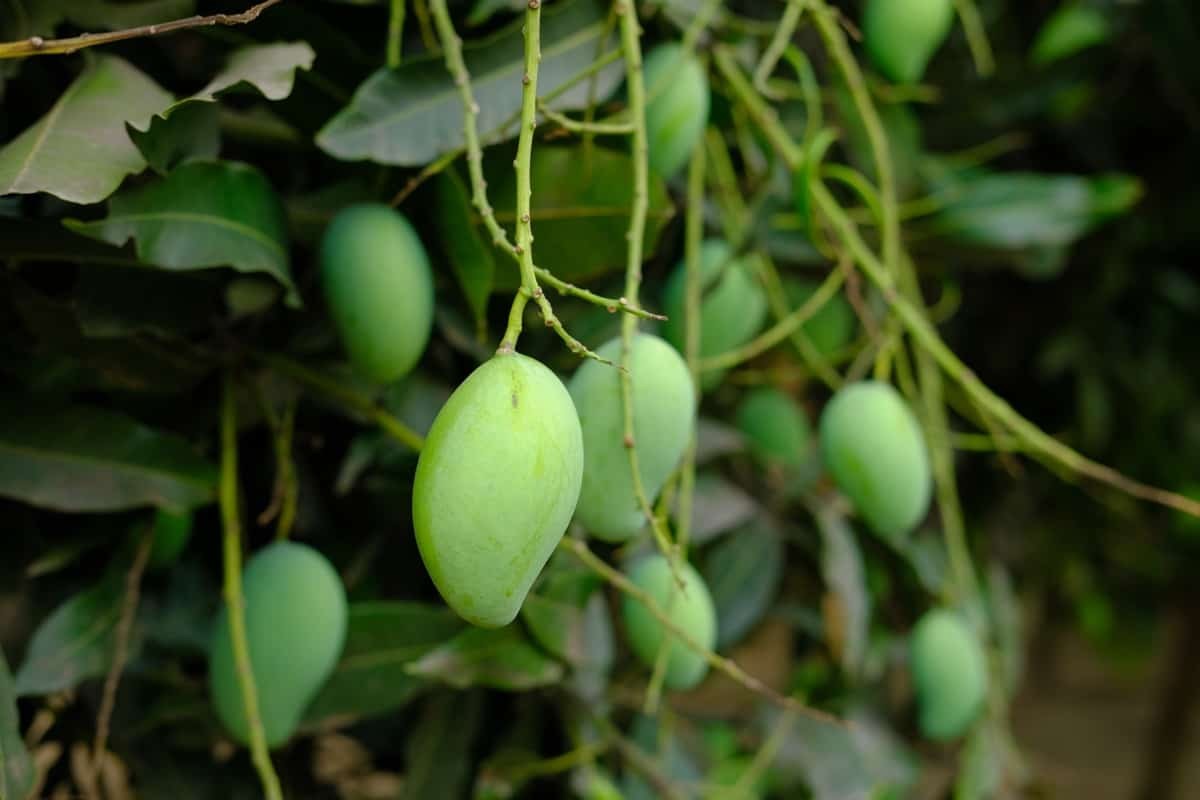
Climate Requirements for Successful Mango Cultivation in Kenya
Altitude and Rainfall Mangoes experience two main growth flushes annually in Kenya’s Coastal region, occurring from May to June and November to December. In medium altitude areas (800-1600m a.s.l), the primary growth flush happens in May to June following the long rains, with flowering occurring about three months later. Mango trees have deep roots, making them drought-tolerant.
However, water is crucial during flowering and fruit set for high yields. If planted in dry locations, continuous irrigation is necessary until harvest, after which the irrigation interval can be reduced. Temperature Mangoes thrive between 24°C to 30°C, ideal for flowering. Pollen viability decreases at 35°C. The optimum growth temperature is 25°C.
Mango cultivation is feasible from sea level (0 m a.s.l) to medium Altitude (1600 m a.s.l). Rainfall Mangoes can grow in areas with as low as 650 mm of annual rainfall, but it’s essential to have distinct dry periods for successful flowering and fruiting. Balancing water availability and dry periods is crucial for optimal mango farming in Kenya.
Soil Preparation for Mango Farming in Kenya
- Soil Suitability: Mangoes grow well in various soils except waterlogged, alkaline, or shallow soils.
- Preferred pH: Aim for a pH of 5.5 – 7.5 for optimal mango cultivation.
- Soil Types: Deep, well-drained loam or clay soils favor mango farming.
Mango Grafting Methods Used by Kenyan Farmers
Kenyan farmers use different grafting techniques to propagate desirable mango varieties efficiently, ensuring healthier and more productive orchards. Common methods include whip and tongue grafting, cleft grafting, approach grafting, side grafting, inarching or bridge grafting, vector grafting, and epicotyl grafting. These techniques enable Kenyan farmers to join two rooted plants, create slits or notch on the rootstock’s side, and graft scions onto the rootstock’s surface. By utilizing these techniques, Kenyan farmers can ensure the growth and health of their mango orchards.
Fertilizer Application for Mango Trees in Kenya
- Organic and Inorganic Fertilizers: Both types work effectively for mango trees.
- Constant Nitrogen Supply: Mangoes need a steady nitrogen supply for optimal growth.
- Sandy Soil: Higher fertilizer quantities may be required if planted in sandy soil.
- Soil Analysis: Conduct a soil analysis to determine the specific fertilizer type and rate needed.
- Customized Application: The quantity of manure and fertilizer applied depends on soil fertility and the plant’s age.
- General NPK Recommendation: For mango trees, a balanced NPK (Nitrogen, Phosphorus, and Potassium) ratio is beneficial. A common recommendation is 10-20-20 or 15-15-15 NPK fertilizer for young mango trees. For mature trees, switch to a 6-6-6 NPK ratio.
In case you missed it: How to Start Soybean Farming in Kenya: A Step-By-Step Production Guide for Beginners
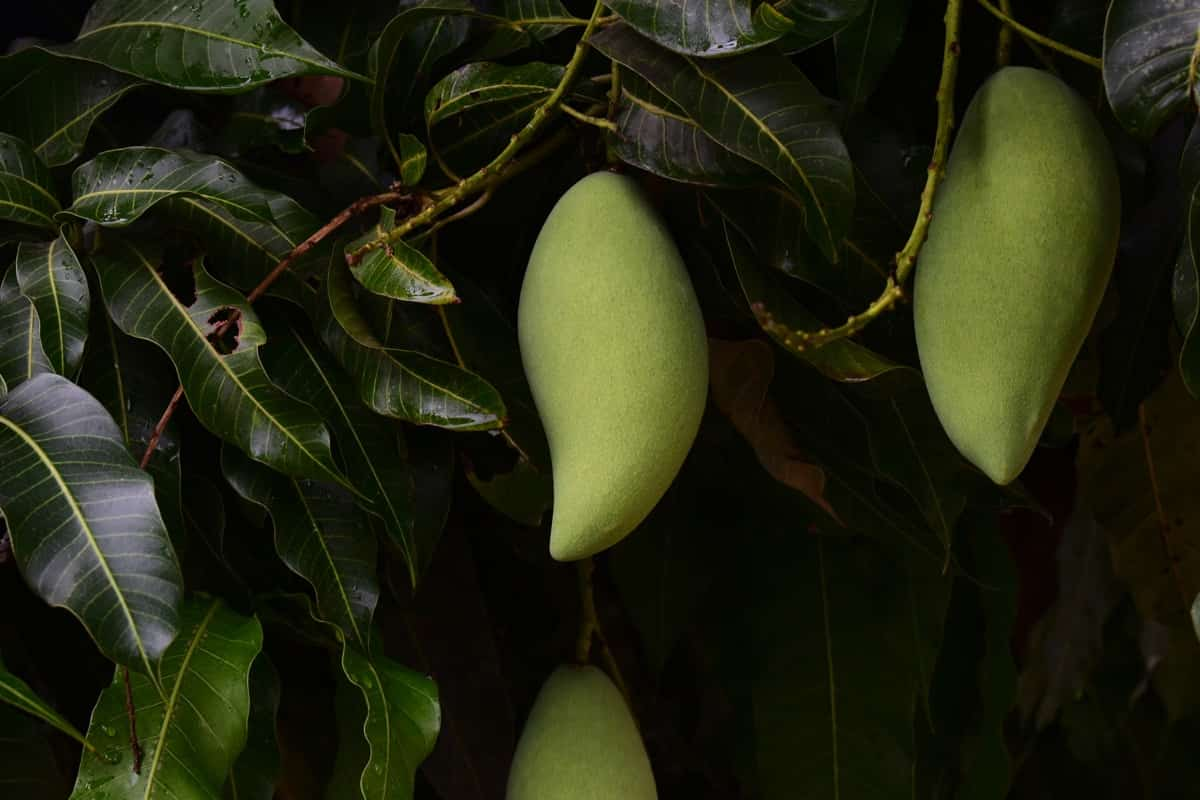
Best Mango Varieties for Kenyan Farmers
These mango varieties have proven suitable for specific altitudes in Kenya and can offer farmers excellent fruit quality and yields based on their unique growing conditions.
Low Altitude (0-800m) Commercial Cultivars
- Ngowe: Large and elongated fruit with deep yellow color, excellent flesh quality, and fiber-free.
- Boribo: Slightly broader than Ngowe, with deep orange-red fiber-free flesh.
- Apple: Round-shaped fruit ripening to rich yellow-orange or red, boasting an excellent flavor.
- Batawi: Very large, round fruit with an olive-green to purple-maroon color. Good texture, minimal fiber, and fine flavor.
Mid Altitude (800-1600m) Commercial Cultivars
- Haden: Spreading tree with large, ovate fruit. When mature, the fruit has a yellowish color, mostly covered with red, offering mild flavor and little fiber.
- Tommy Atkins: Dense tree with medium to large (500g) fruit, thick-skinned, turning purplish when ripe.
- Kent: Spreading tree with large, ovate fruit (500-600g), greenish-yellow with a red shoulder, and fiberless.
- Vandyke: Upright tree producing relatively smaller fruit with a deep pinkish color, smooth flesh, and no fiber.
Mango Tree Pruning Techniques in Kenya
Pruning is essential for mango trees to enhance flower bud formation and increase yield. It also stimulates new growth, promotes uniform annual bearing, and controls tree size during the dormant season.
Formative Pruning
Cut the main shoot 1m high, allowing three or four horizontal shoots to form a strong tree frame. Subsequent pruning involves removing dead wood and opening the canopy for better light penetration.
Flower Inducement Techniques
- Potassium Nitrate Spray: Apply 2-3 kg/ha of potassium nitrate when the plants are dormant.
- Water Deprivation: Temporarily withhold water for 1-2 months to induce stress, then resume regular irrigation.
- Ringing or Root Pruning: Girdle the branches or root pruning to stimulate flowering.
In case you missed it: How to Start Organic Farming in Kenya: Crop, Schemes, Challenges, Pest and Diseases Management
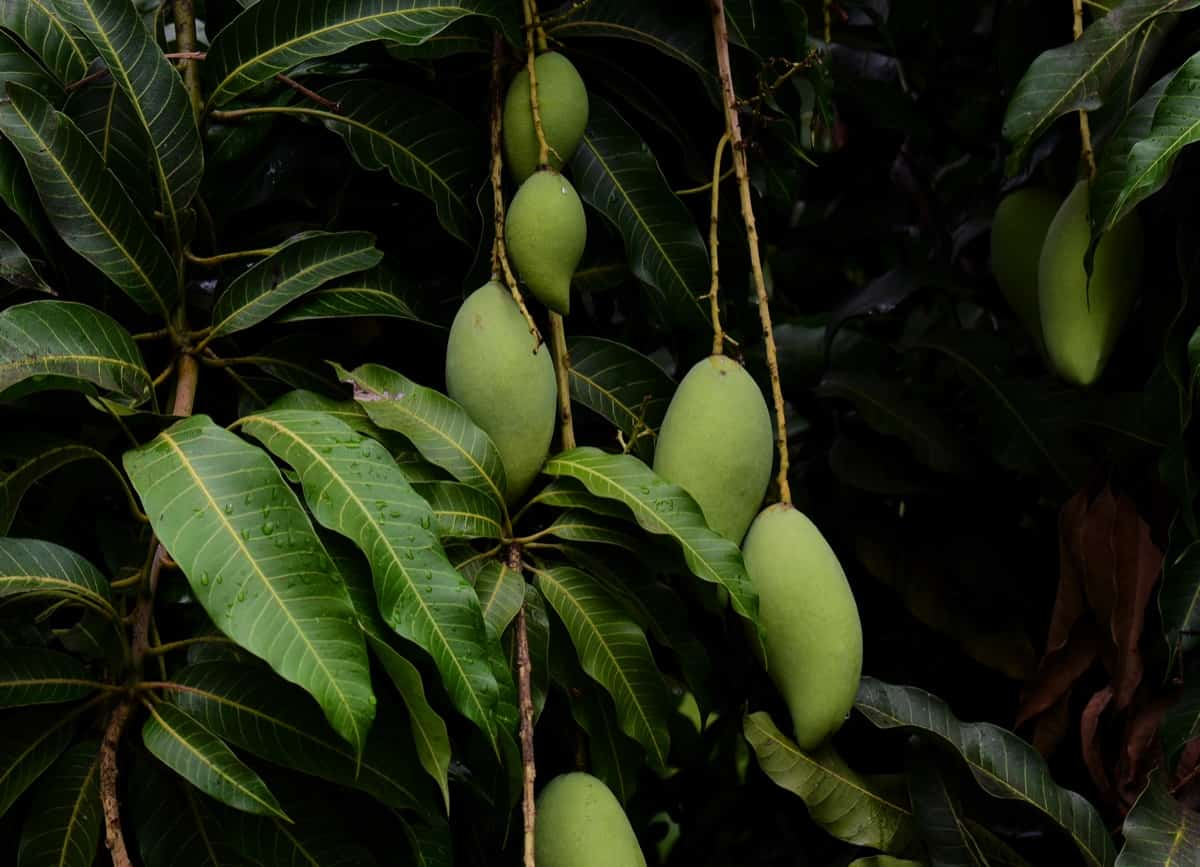
Mango Cultivation Tips for Kenyan Farmers
- Transplant Preparation: Cut the taproot six weeks before transplanting to encourage feeder root development.
- Planting Holes: Dig holes measuring 60 x 60 x 60 cm at appropriate spacing (9 x 9 m to 13 x 13 m) based on the variety and soil type.
- Soil Enrichment: Mix 15 kg of well-decomposed manure and 120g of DAP (diammonium phosphate) with topsoil for each hole.
- Planting: Place the young tree into the hole and firmly press the soil around the stem. Irrigate if there’s insufficient rainfall for proper establishment.
- Mulching: Mulch around the tree to control weeds and conserve moisture.
- Fertilization: Top-dress each tree with 250g of CAN (calcium ammonium nitrate) at the start of each rainy season after reaching a height of 1 m. Adjust the rate based on soil fertility.
- Fertilizer Composition: Initially, mangoes need high nitrogen levels, but once they start bearing fruits, they increase phosphate and potash in the fertilizer.
Mango Pests and Diseases in Kenya
- Pests: Common pests affecting mangoes in Kenya include thrips, mango seed weevil, red spider mites, mealybugs, and mango fruit flies.
- Diseases: Mangoes are susceptible to powdery mildew and anthracnose and die back.
- Management: Control pests using insecticides and pesticides such as emerald, loyalty, Lexus, and alonze. Sprays like Trinity Gold, ransom, and green cop are effective against diseases.
- Integrated Pest Management (IPM): Implement IPM practices, combining biological, cultural, and chemical control methods for sustainable pest and disease management.
- Proper Farm Sanitation: Maintain clean orchards and remove infected plant material to prevent disease spread.
- Resistant Varieties: Choose disease-resistant mango varieties to reduce the impact of diseases.
Irrigation Methods for Mango Farming in Kenya
- Young Plant Establishment: Proper irrigation is crucial for young mango plants to establish well.
- Mature Trees: For mature trees, irrigate at 10 to 15-day intervals from fruit set to maturity to enhance yield.
- Pre-Flowering Period: Avoid irrigation for 2-3 months before flowering, as excessive water can promote vegetative growth over flowering.
- Intercropping: Intercropping with vegetables, legumes, and short-length fruit crops like papaya, guava, peach, and shrub, depending on the region’s agro-climatic conditions. Ensure separate watering and nutrient supply for intercrops to meet their specific requirements.
Mango Harvesting and Post-harvest Management in Kenya
Mango Yield
Mango yield varies based on agro-climatic conditions. Grafted mango trees start bearing fruit in the second year, while seedling trees may take 5-8 years. Initial yield is low, around 10-20 fruits (2-3 kg) per tree, increasing to 50-75 fruits (10-15 kg) in subsequent years and reaching up to 500 fruits (100 kg) in the tenth year. In the age range of 20-40 years, a tree can yield 1,000-3,000 fruits (200-600 kg) annually. The productive life of a grafted mango tree is usually 40-50 years.
Post-Harvest Handling
Mangoes have a short shelf life of 2 to 3 weeks. To preserve their quality, they must be cooled immediately after harvest to a storage temperature of 13°C. Some varieties can tolerate a storage temperature of 10°C. Post-harvest handling involves various steps such as preparation, grading, washing, drying, waxing, packing, pre-cooling, palletization, and transportation.
In case you missed it: How to Start Hydroponic Farming in Kenya: Crops, Subsidy, Cost, and Profit
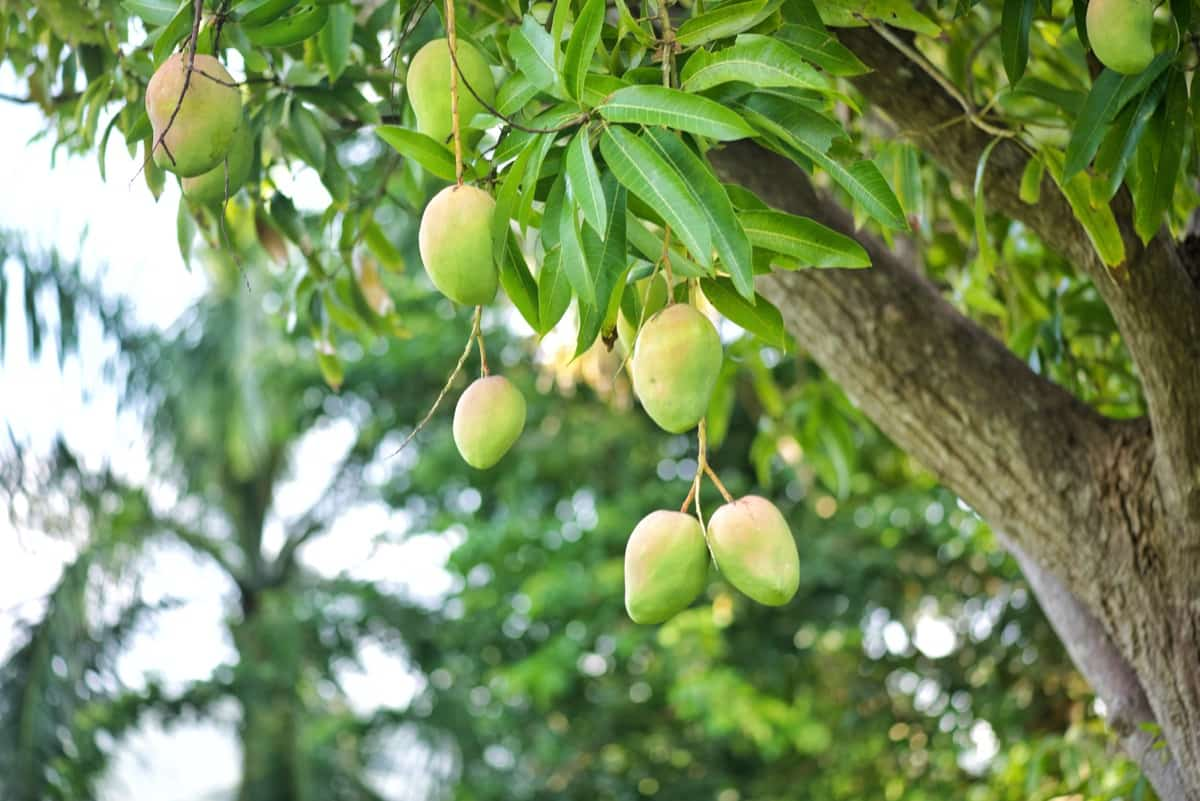
Mango Packaging
Mangoes are typically packed in fiberboard boxes, usually 40cm x 30cm x 20cm in size. They are packed in single layers with 8 to 20 fruits per carton. Adequate ventilation through air holes (about 15% of the surface area) is essential to ensure proper ventilation.
Market Opportunities for Kenyan Mango Farmers
In the eastern part of Kenya, particularly in Meru and Makueni counties, mango farmers face significant post-harvest losses, reaching up to 45% of their crop. Poor harvesting techniques, handling, and pest and disease infestations are major contributors to this issue. To address this challenge, UN Women has introduced a new multi-food processing machine in collaboration with Jomo Kenyatta University of Agriculture and other partners.
Through training and support, 100 farmers, half of women, have been equipped with the knowledge of fruit processing, packaging, and branding. This new technology has the potential to not only reduce mango losses but also open up market opportunities for farmers, generating supplemental income and improving their livelihoods. Collaboration among farmers’ groups and support from local governments further enhance the prospects for success in the mango industry, benefiting individual farmers and the region’s economy.
Organic Mango Farming in Kenya
Organic mango farming in Kenya involves soil improvement, natural pest control, organic fertilizers, chemical-free practices, sustainable practices, and certification. Soil improvement methods like composting and green manure enhance fertility and structure. Natural pest control methods, such as beneficial insects and companion planting, manage pests without chemical intervention.
Organic fertilizers provide essential nutrients to mango trees, while chemical-free practices avoid synthetic pesticides. Sustainable practices promote biodiversity, conserve water, and protect the environment. Organic certification ensures the integrity of mangoes for consumers.
Challenges Faced by Mango Farmers in Kenya
Mango farmers in Kenya face challenges, including pests and diseases, post-harvest losses, inadequate processing facilities, water scarcity, market access, climate change, and limited access to finance and technology. These factors can negatively impact yields, profitability, and tree health.
In case you missed it: Sheep Farming in Kenya: How to Start, Breeds, Loans, Zero Grazing, and Feeding for Beginners
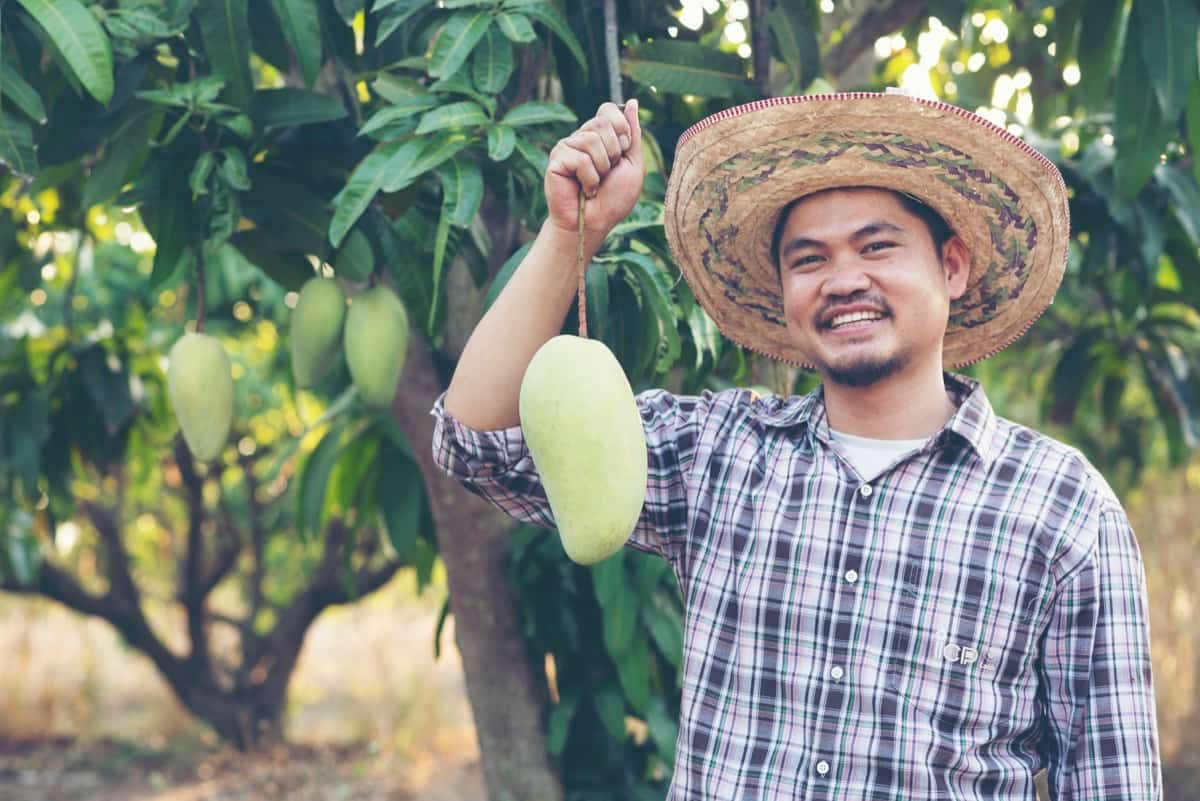
Proper irrigation practices can also impact fruit development. Limited market access and fluctuating prices also pose challenges for farmers. Climate change and weather events also impact mango cultivation and production. Lack of access to finance and modern farming technologies further hinders farm expansion and productivity improvements.
Conclusion
Sweet Success: A Comprehensive Guide to Mango Farming in Kenya” provides essential knowledge and practical tips for successful mango cultivation. Kenyan farmers can thrive in this fruitful industry and achieve sweet success by adopting the techniques and management practices outlined.
- Types of Pesticides Used in Agriculture: A Beginner’s Guide
- Economical Aquaculture: A Guide to Low-Budget Fish Farming
- 15 Common Planting Errors That Can Doom Your Fruit Trees
- How to Make Houseplants Bushy: Effective Tips and Ideas
- Innovative Strategies for Boosting Coconut Pollination and Yield
- Pollination Strategies for Maximum Pumpkin Yield
- The Complete Guide to Chicken Fattening: Strategies for Maximum Growth
- Natural Solutions for Tulip Problems: 100% Effective Remedies for Leaf and Bulb-Related Issues
- Revolutionizing Citrus Preservation: Towards a Healthier, Greener Future
- Natural Solutions for Peony Leaf and Flower Problems: 100% Effective Remedies
- Maximizing Profits with Avocado Contract Farming in India: A Comprehensive Guide
- Natural Solutions for Hydrangea Problems: 100% Effective Remedies for Leaf and Flowers
- The Ultimate Guide to Choosing the Perfect Foliage Friend: Bringing Life Indoors
- From Sunlight to Sustainability: 15 Ways to Use Solar Technology in Agriculture
- The Ultimate Guide to Dong Tao Chicken: Exploring from History to Raising
- The Eco-Friendly Makeover: How to Convert Your Unused Swimming Pool into a Fish Pond
- Mastering the Art of Delaware Chicken Farming: Essentials for Healthy Backyard Flocks
- 20 Best Homemade Fertilizers for Money Plant: DIY Recipes and Application Methods
- How to Craft a Comprehensive Free-Range Chicken Farming Business Plan
- Brighten Your Flock: Raising Easter Egger Chickens for Beauty and Bounty
- How to Optimize Your Poultry Egg Farm Business Plan with These Strategies
- Subsidy for Spirulina Cultivation: How Indian Government Schemes Encouraging Spirulina Farmers
- Ultimate Guide to Raising Dominique Chickens: Breeding, Feeding, Egg-Production, and Care
- Mastering the Art of Raising Jersey Giant Chickens: Care, Feeding, and More
- Ultimate Guide to Raising Legbar Chickens: Breeding, Farming Practices, Diet, Egg-Production
- How to Raise Welsummer Chickens: A Comprehensive Guide for Beginners
- How to Protect Indoor Plants in Winter: A Comprehensive Guide
- Ultimate Guide to Grow Bag Gardening: Tips, Tricks, and Planting Ideas for Urban Gardeners
- Guide to Lotus Cultivation: How to Propagate, Plant, Grow, Care, Cost, and Profit
- Agriculture Drone Subsidy Scheme: Government Kisan Subsidy, License, and How to Apply Online
- Ultimate Guide to Raising Araucana Chickens: Breed Profile, Farming Economics, Diet, and Care
- Bringing Hydroponics to Classroom: Importance, Benefits of Learning for School Students
- Ultimate Guide to Raising Polish Chickens: Breed Profile, Farming Economics, Diet, and Care
- Ultimate Guide to Raising Australorp Chickens: Profile, Farming Economics, Egg Production, Diet, and Care
- Silkie Chicken Farming: Raising Practices, Varieties, Egg Production, Diet, and Care
- Sussex Chicken Farming: Raising Practices, Varieties, Egg Production, Diet and Care